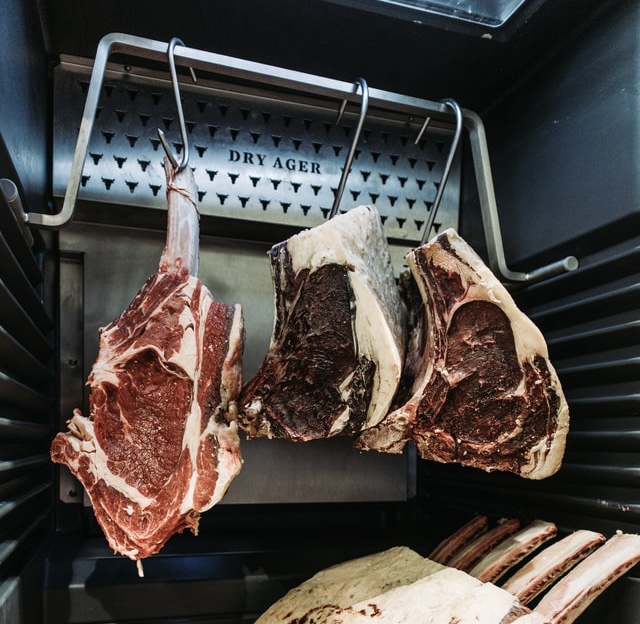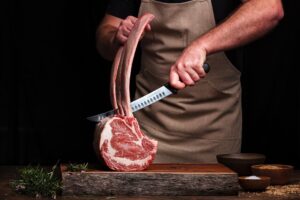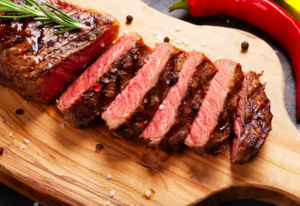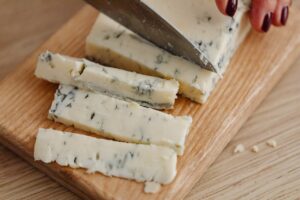Sometimes, you may see a label “dry aged” on beef with a higher price tag. Have you ever wondered what it means and why it is more expensive? This article answered it, let’s go!
Table of Contents
What Is Beef Aging & How Does It Work?
The word “Beef Aging” may be misleading which is not related to the age of the cattle. It is a process of preparing beef that is stored and refrigerated for a long period of time under a controlled environment for the sake of breaking down the connective tissues. In fact, there are two types of beef aging—Wet Aging and Dry Aging. Below is a more detailed introduction about them.
Wet Aged Beef: What Is Wet Aging Beef?
Wet Aging is the aging method that ages beef in a vacuum-sealed bag at 32°F to 45°F (0°C to 7.2°C) for around 4-10 days. It is the primary aging method in the U.S. and UK. Since it requires less time and retains the moisture, the final weight of beef doesn’t decrease which could sell with a better price by weight. This is more common in cheaper beef.
Dry Aged Beef: What Is Dry Aging Beef?
Dry Aging is less common owing to the higher cost and more complicated process but more desirable. After slaughtering, the butchers will hang and store the beef in a refrigerated room without any covering. The beef is stored in a room where it is controlled at 32°F to 39°F (0°C to 4°C) with relative humidity of 75-80% for 28-55 days.
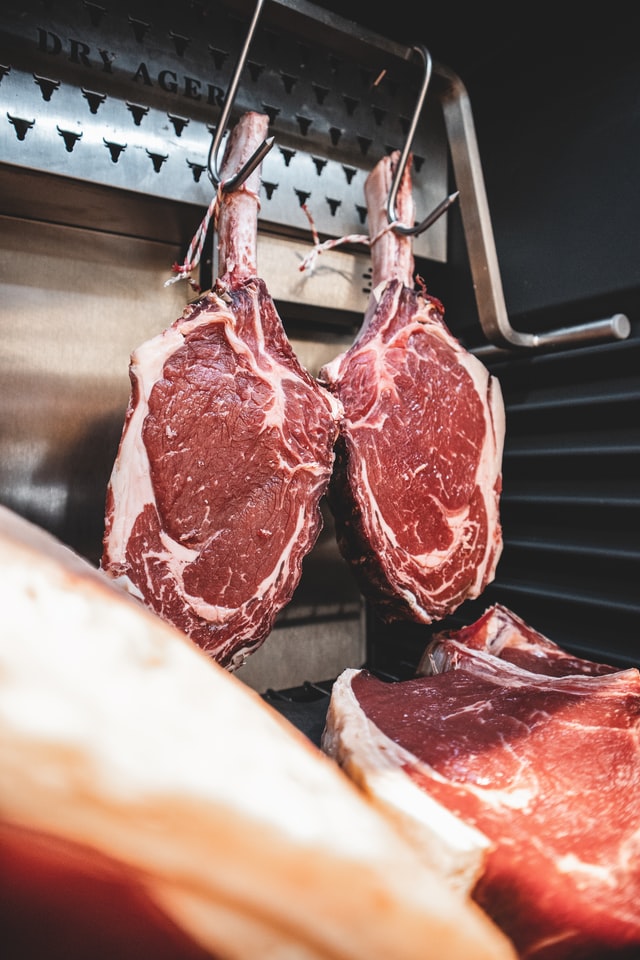
Under these conditions, part of the moisture is evaporated and makes the natural beefy flavor more robust and concentrated. Other than that, the beef is uncovered and exposed to oxygen and allows the natural enzymes and aerobic bacteria within beef to break down the connective tissue which results in a more tender beef. Consequently, the process of dry aging lifts the tenderness and flavor and juiciness to a whole new level.
Dry aged beef is rare in supermarkets but you can find it in high-end butcher shops because it needs a costly, strictly controlled environment and longer time to process. Apart from that, the exterior of meat becomes dry in the end and it is a must to trim this hard case, plus dehydration, the beef loses about 30% of weight. All of these lead to a higher price tag for dry aged beef per unit.
Where to Buy Dry Aged Beef Steak?
Most importantly, choose the superior cuts of beef with a better grade as dry aging can’t do magic to the inferior steaks. It is merely a waste, of course I guess the smart butchers won’t do so. But just bear in mind this rule.
When it comes to the cuts, look for the premium one such as Ribeye, New York Strip, Filet Mignon, Porterhouse and Tomahawk. For grades, opt for the USDA Prime and Choice Beef or even Wagyu beef with a richer marbling and more excellent tenderness.
► Read More: 20 Best Steak Cuts with Ranking (A Complete Guide to Know Your Cuts)
► Read More: 6 Beef Grading Systems In the World (with Complete Chart)
How to Cook Dry Aged Beef Steak?
Dry aged beef is pricey and precious, so don’t make miscalculations!
The following is a step-by-step guide of cooking a dry aged steak. Because of the cuts and high marbling level, we recommend pan searing. Follow the steps below and cook your scrumptious dry aged beef. Let’s go!
1. Thaw
The steak is frozen when it is shipped to your home, and you should store it in the freezer if you are not going to cook it immediately. A day before cooking, transfer the steak to the refrigerator and let it defrost gradually. And take it out to room temperature a half hour before. Some people may thaw steaks by rinsing with running water. These will cause a sudden temperature change and the meat will contract, resulting in loss of juices.
2. Do not add salt at this step
A high quality steak doesn’t need fancy seasonings but simply add a pinch of salt to highlight the flavor. But pay attention to the timing. Adding salt before cooking is for drawing out the moisture and making the surface more crispy. However, dry aged beef already loses part of moisture during the aging process, it is unnecessary to add salt at this step.
3. Pan Searing
This step seems easy but there are practically quite a lot of details. High heat is the magic code of searing the dry aged beef.
Above all, the pan should be high-temperature resistant like a cast iron pan. And it is a must to preheat the pan and then add a thin layer of oil or melt the trimmed fat of beef before putting the steak into it. The idea is to carry out a maillard reaction and seal the juices inside the steak, plus deliver a perfect brown color and aroma. Pat dry the steak and sear the steak over high heat. If the dry aged steak is sizzling in the pan, you do it in the right way.
After searing both sides of the steak, reduce the heat to medium-low and keep cooking until reaches the desired doneness. Use tongs to turn the steak frequently, for example, turn it every 20-30 seconds. This ensures both sides of the steak are at the same doneness but not unevenly cooked.
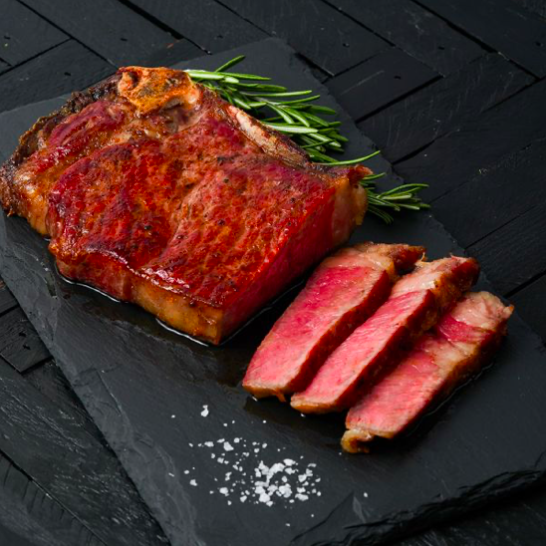
4. Rest the Meat
This is the secret of a juicy and tender steak. Take out the steak from the pan when the thermometer registers 5-10°F lower than the temperature of desired doneness and rest. As the interior of the steak is still being cooked by the residual heat, the temperature will keep rising 5-10°F more. To avoid overcooking, remove the steak earlier. It also helps redistribute and retain the juices within the steak.
For instance, we recommend cooking dry aged beef at medium rare or medium. The final internal temperature of medium rare is 125-130°F, so bring the beef out at 115-125°F. To cook medium, aim for 135-140°F, stop the heat when it reaches 125-135°F.
Give 5-10 minutes for the steak to rest depending on the thickness. Don’t slice it before that, otherwise you will receive a dry and tough but expensive dry aged beef!
5. Enjoy!
Now, you can sprinkle a pinch of salt and pepper to highlight the umami flavor of dry aged beef. If you do not want to taste the texture of salt but only the flavor, add it before resting and let the salt dissolve on the dry aged steak.
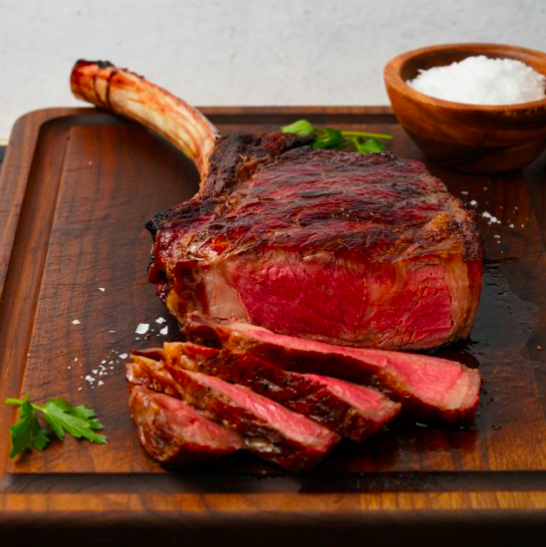
Summary
To sum up, dry aged beef has a more intensified flavor and incredible tenderness over weeks of decay under a strictly controlled environment. Dry aged beef is superior to wet aged beef in terms of the beef itself and the quality after aging. You can more probably find it in the high-end butcher shops like Snake River Farms. We highly recommend you to try at least once and taste the differences between regular beef and dry aged beef!
► Read More: Learn Wagyu Beef In 10 Minutes | The Finest Beef In The World
► Read More: Grass Fed Beef vs Grain Fed Beef

